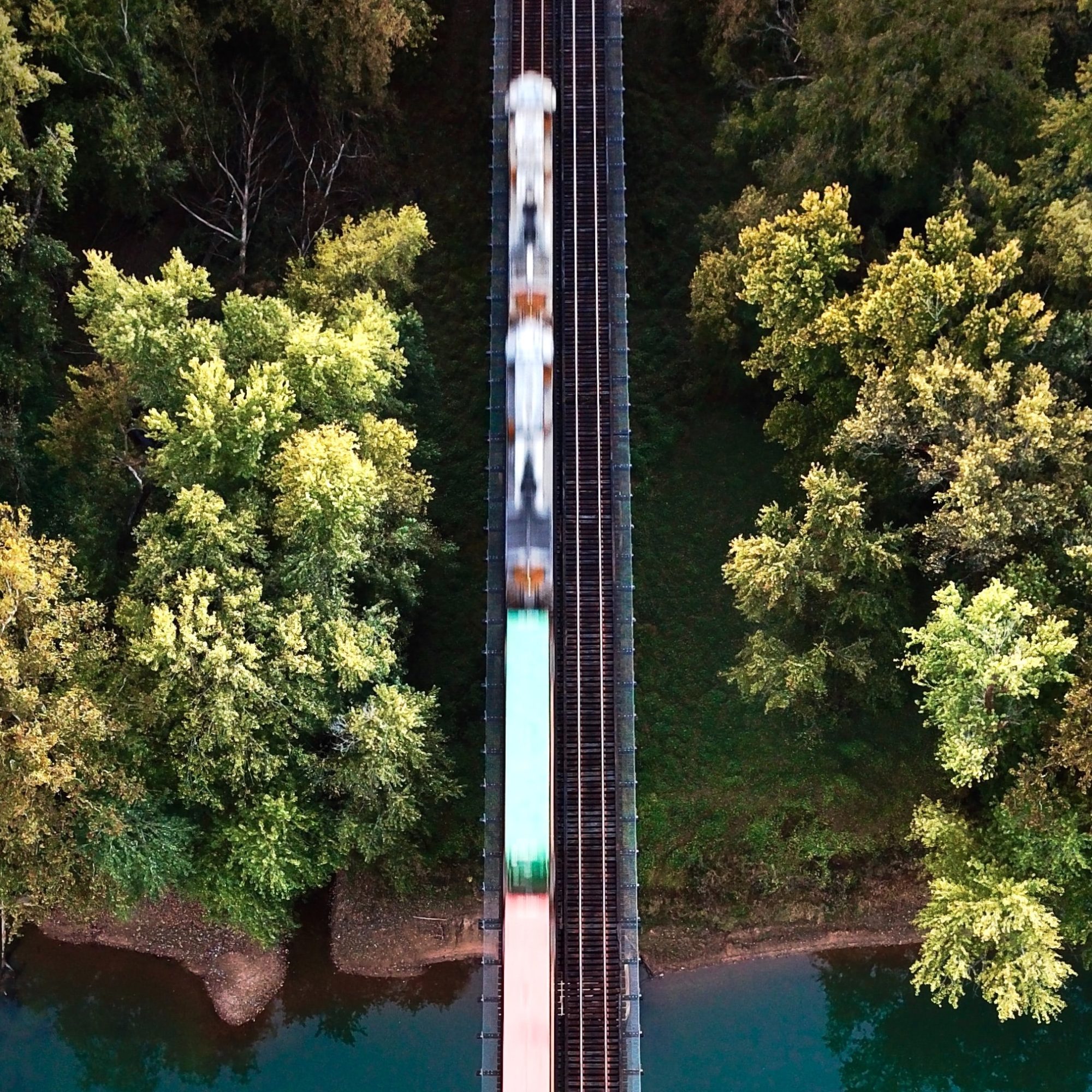BLUF: The year 2021 has seen supply chains and shipping disruptions of epic proportions. With consumerism on the rebound from COVID-19, supply chain kinks are being ironed out, but the strain on shipping is unlikely to be alleviated anytime soon. Given how global supply chains are, foreign policy and national security are seeing impacts from healthcare to cyber warfare. Flexibility, forecasting, contingency planning, and reform are certainly needed to prepare for future disruption. Our best shot at long-term solutions, however, might just be an American reevaluation of priorities from things to people.
If 2020 was the year no one could find toilet paper or yeast, then 2021 was the year of shipping and supply chain woes. Twice last month, I bought a dress for a wedding only to be refunded with a “sorry, not sorry but we can’t deliver.” Pepper jelly for Thanksgiving from Trader Joe’s? No luck. The same has reverberated around holiday tables and text chains: You either can’t buy it or don’t receive it. With the holidays upon us, THE BABES BLUF is tackling what you need to know about supply chains and shipping.
SUPPLY CHAIN VS SHIPPING ISSUES
A recent CNBC article proclaimed, “The worst is over for global supply chains, but shipping association says industry faces lingering issues” (though plenty of others think this is far from over). Often, the two issues are conflated and confused, but by parsing out the difference we can not only understand who to blame when your gift arrives late (just kidding), but how to tackle the issues (actually important).
A supply chain is essentially the network of companies and people needed to produce and distribute an item. Take your iPhone for example. Before you’re able to walk into an Apple store to buy that sleek white box, it touches a variety of hands. The phone begins as a bunch of raw materials, which go to a supplier, who sells the components to a manufacturer, who makes the phone, who passes it to a distributor, who delivers it to a retailer, who eventually sells (and possibly also ships) it to you. Phew! Because these parts can take place across states, countries, and the globe, shipping is part of the overall supply chain usually at every step. Unfortunately, both supply chains and shipping have seen significant disruption over the course of the COVID-19 pandemic.
WHAT EXACTLY IS A SUPPLY CHAIN?
After a brief decline in 2020, the trade of goods increased in 2021, according to the chairman of German conglomerate Siemens and Danish shipping firm Maersk. With an estimated 45% of the American workforce remaining on full telework in 2021, people are investing in their homes (and home offices) in record numbers. Fun fact: A recent poll found that 40% of Americans would rather clean their toilets than commute to work and I felt that; but, I digress. The economy is booming now in some strange ways but 94% of Fortune 1000 companies experienced disruptions from COVID-19.
As COVID ravaged health care systems and humanity, companies implemented precautions and halted production and manufacturing around the globe. According to Nick Vyas, the director of the Global Supply Chain Institute at the University of Southern California, “We allowed supply chains to get away without having contingencies in place, resiliencies in place, and other measures to ensure humanity would never be subjected to this.”
Folks are recognizing that COVID-19 is not just a short-term crisis but will continue to have long-term implications on employment and supply chain systems.
Remember the supply chain process from earlier? Well, many manufacturers operate on an “on demand” principle, which basically means that they only make what they anticipate being purchased so that they can meet the cost of production and also eliminate the need to store excess product. For some time during the pandemic, consumers weren’t consuming normal goods, so manufacturers reduced or stopped production altogether to account for the lack of demand. In other cases, factories were understaffed due to COVID-19 concerns. Some companies even downsized, but now as things are bouncing back (sort of), many people don’t want to go back to the same old jobs, resulting in labor shortages. In some instances, other large manufacturers simply couldn’t get the necessary supplies, raw materials, or personal protective equipment (PPE) because reserve supplies were never part of a manufacturer’s equation and impacted bottom lines.
Additionally, US production saw a problem with industry consolidation. If companies were using just one supplier for certain parts and that production closed for sanitation purposes — as was the case in 2020 for many places when US manufacturing activity slowed in from its highest level in nearly 17 years — then products simply became unavailable overnight. Did you know that only four beef packers control over 80% of the American market; domestic air travel is dominated by four airlines; and many Americans have only one choice of reliable broadband provider? This isn’t great for competition in general but it really isn’t great for contingency planning in a pandemic. The same is still the case when parts are being made or assembled in countries where vaccination rates continue to be low. *cough* why sharing/giving the vaccine to other countries isn’t the worst idea *cough.*
Since the pandemic has been around for some time now, supply chains are maybe starting to work out the kinks. If there are silver linings to the pandemic, one might be found in the future of supply chains. Folks are recognizing that COVID-19 is not just a short-term crisis but will continue to have long-term implications on employment and supply chain systems. A recent Accenture report urged companies to add flexibility into planning to protect against future disruptions, including a special emphasis on resilient risk management looking at demand drops/surges, supply shortages, inventor placement challenges, and reduced productivity — what a novel idea!
SANTA NEEDS MORE THAN ELVES
Hold onto your reindeers for this facet is simply not jolly. And before we dive deeper, let’s get one thing straight: COVID didn’t cause the shipping crisis, it just exposed the deeply fraught system already in existence. You’ve likely heard the stories of cargo ship-flotillas off the coast of California, unable to dock and unlock due to the logjam at port. Picture all your Christmas gifts all hanging out in the shipping crates like an island conglomerate of misfit toys.
So, what the hell happened?
Remember that when COVID-19 hit, everything and everyone came to a halt, including the consumerism mentioned above. We weren’t buying anything, and we definitely weren’t taking shipments from Asia so cargo ships and American ports all hit pause, but before long, we needed toilet paper and PPE, and we needed it badly. So, shipping resumed at an accelerated pace. Every single port in the US became congested, especially the Ports of Los Angeles and Long Beach, which account for 40% of all imports.
With congestion came waits and ships began to anchor offshore (something previously unheard-of pre-pandemic) while they waited for port slots to open so a new ship could dock and unload. With more ships arriving than port slots, wait times grew. In September 2021 there were as many as 73 ships a day waiting to unload in only 20 port spots.
Yet, the problem wasn’t and isn’t just too many boats per port slot. After all, you need human beings to help offload containers. It’s a grueling process and there are only so many people available to do the work, but those workers are also susceptible to the illness causing the shipping congestion in the first place. A Weber logistics article breaks this down, “Workers can be forced out of rotation due to illness and/or COVID-related protocols. There simply aren’t replacements standing by. Crane operators, for example, must undergo a rigorous training program — it’s not a position that can be filled quickly.”
It doesn’t ends at docking. After you dock and offload cargo, you need a chassis for your cargo, which is usually rented, but those are in high demand and short supply. Got all that? Okay, now you need a truck driver and that is a problem worth a whole BLUF in and of itself. While some argue there is a shortage of drivers, the drivers are saying it’s the pay and conditions causing the problem, not a shortage of truck drivers. Either way, there are only so many trucks, so many drivers, and so many hours in a day and drivers are limited in their hours for their own safety — though they already work absurdly long hours. Try doing the math and any way you arrange the numbers, it doesn’t add up. If you do manage to dock, offload, get a chassis and a driver, you need a warehouse to store your cargo… Well, guess what? Yup, all those are backed up, too.
FIRST WORLD PROBLEMS
The supply chain and shipping chaos experienced throughout the pandemic, and felt harder this year over the holidays, is frustrating for everyone. It’s also shedding light on some serious national security and foreign policy red flags:
- American consumerism and inequality: As a country, we have reached peak consumerism and the inequality is showing. The “stuff” coming in droves to our ports isn’t just toilet paper anymore. Turns out, Americans are buying things in place of boredom, anxiety, and insecurity. American consumer expenditures — both necessity spending (rent, gas, groceries) and discretionary spending — account for about 70% of the country’s economy, according to the Bureau of Labor Statistics. However, the top 20% of income-earning Americans account for a disproportionate 40% of the country’s consumer spending and the wealthier crew’s spending is significantly more in the discretionary camp.
- Disproportionate impacts around the globe: Americans may be the ones consuming the most but we aren’t the only ones with problems. “Border controls and mobility restrictions, unavailability of a global vaccine pass, and pent-up demand from being stuck at home have combined for a perfect storm where global production will be hampered,” said Tim Uy of Moody’s Analytics. The impact of deliveries not being made on time and increase in costs will result in slowing GDP growth. Until the US recognizes that an America first policy doesn’t always work in a globalized world, we will have to face the music of a mess we directly and indirectly cause given that a slow global economic growth impacts all of us.
- No vaccines = supply chain problems: “To beat the pandemic here we need to beat it everywhere,” President Joe Biden said in his announcement to donate 55 million vaccines to the world via COVAX. Sharing the vaccine with the globe isn’t just about altruism but also about improving long-term supply chains. When countries have low vaccine rates, supply chains are impacted and as we have already covered, supply chains impact American consumerism and global economic growth.
- Medical supply blocks: In 2020, both the public and professionals couldn’t get necessary PPE. A global health crisis is only made worse by the inability to access the protective equipment needed to fight it. COVID, however, isn’t the only disease that requires meds, treatment, or PPE. Supply chain/shipping problems, therefore, are having real impacts on healthcare worldwide. For example, in India, reduced production of pharmaceuticals is expected to continue through the lockdown period, including impacts to antiretroviral, malaria, and TB medicines. Freight and logistics continue to be of concern with a variety of country restrictions contributing to routing, equipment, and capacity constraints. Delivery delays of several weeks or more are being experienced around the world.
- Nat sec hacks: I promise you, you’re not ready for this. In 2021, the SolarWinds attack breached a variety of systems across the US in an incredibly sophisticated manner. Though no one has taken credit for the hack, it is widely suspected that Russia was the culprit. According to some scholars, the core of the hack is… a supply chain problem. “Fundamentally rethinking our software and our hardware supply chain is a basic question of national security.” Turns out, often software components are reused and recycled, but this practice makes it easier for a single infection to spread rapidly between applications. How is all this related? Well, that industry consolidation discussed earlier means less options for manufacturers, especially in the pandemic, which in turn impacts the availability of parts and eases the possibility of tech disruptions.
SOME HOLIDAY ADVICE
Since this is the season of giving, and I am known by many as a holiday elf of sorts, let me spread a bit of Christmas advice. We have become a nation of high expectations when it comes to services and consumerism — but I don’t say that kindly. In the era of Amazon Prime delivery and DoorDash, we expect everything to be prompt and immediate. Maybe this holiday season, if COVID has taught us anything, we can try our best to remember that things don’t need to be at the center of our happiness and the world might be both better off, safer, and cleaner if we consumed less, and gave more.
Here is a list of alternative gift ideas this holiday season that may ease the supply chain and shipping strain.
- Donate money to your local food bank, domestic abuse shelter, civil liberties organizations, LGBTQ+ support, mental health resources, veteran services, training programs for girls, or independent media.
- Volunteer together at your local food bank or animal shelter.
- Donate clothes/toys/household items to your local community center or shelter.
- Plan a date to your closest national park.
That’s all for this one, babes.
No pressure. No bullshit. Just, THE BABES BLUF.
THE BABES BLUF (bottom line up front) is a different kind of current affairs and lifestyle blog that talks about issues in a way women (and men!) can relate to and enjoy. To read more from THE BABES BLUF, visit www.thebabesbluf.com and subscribe to never miss a #BLUF, and check them out on Twitter or Instagram. For more THE BABES BLUF pieces, see here.




















